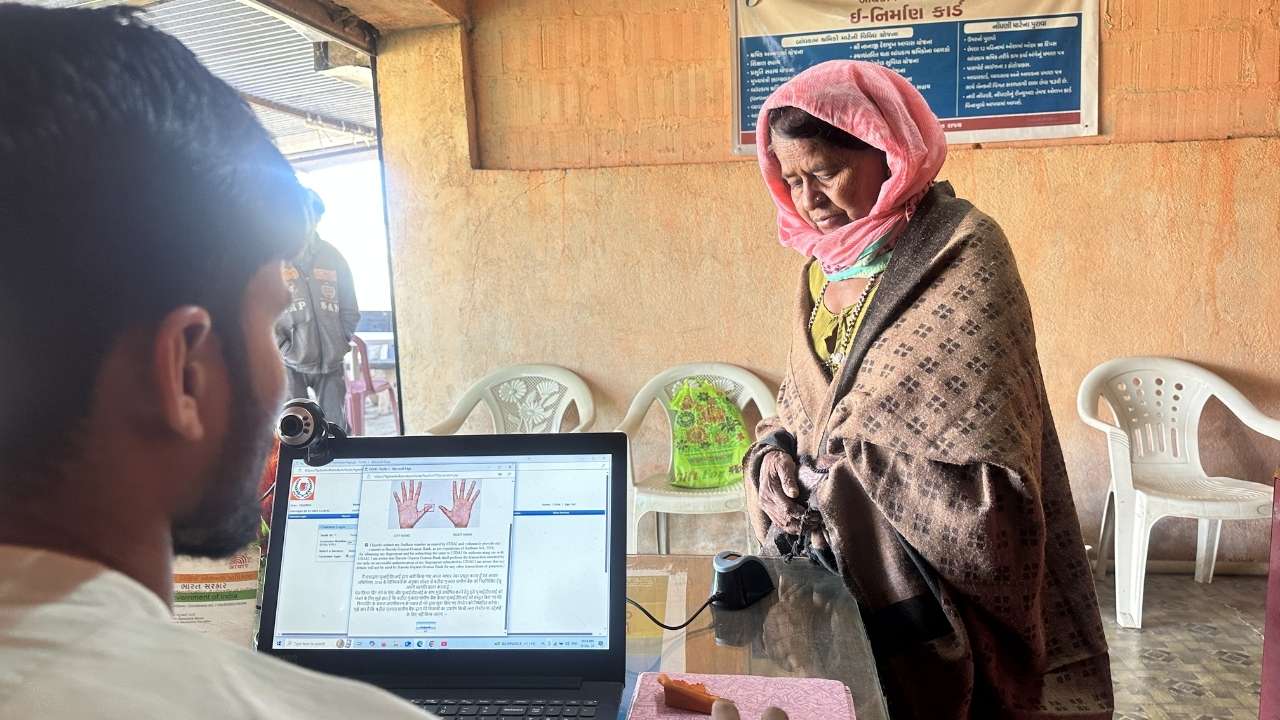If you are over State Pension age and live with a long-term illness or disability, you may be eligible for up to £441 a month in support from the Department for Work and Pensions (DWP). This benefit is called Attendance Allowance, and while headlines mention “57 health conditions,” what really matters is how your condition affects your day-to-day care needs.

This article explains everything you need to know about Attendance Allowance — who qualifies, what the payment rates are, how to apply, and what to do if your claim is rejected. Whether you’re applying for yourself or helping a loved one, this step-by-step guide will walk you through the full process.
These 57 Health Conditions Could Get You £441 Monthly From DWP
| Topic | Details |
|---|---|
| Benefit Name | Attendance Allowance |
| Maximum Payment (2025–26) | £110.40 per week (approx. £441.60 every four weeks) |
| Who Can Apply | UK residents over State Pension age with care or supervision needs |
| Number of Common Conditions | 57 health conditions often associated with successful claims |
| Eligibility Based On | Care and supervision needs, not diagnosis alone |
| Means-Tested? | No — savings and income do not affect eligibility |
| Linked Benefits | Pension Credit, Council Tax Reduction, Carer’s Allowance (for carers) |
| How to Apply | Submit the AA1 form by post via GOV.UK or request it by phone |
| Official Information | gov.uk/attendance-allowance |
If you are over State Pension age and struggling with everyday activities because of a long-term health condition, you may be entitled to up to £441 a month from the DWP through Attendance Allowance. The so-called list of “57 health conditions” is only a guide — what truly matters is how much support you need.
Do not delay. Order the form, fill it carefully, and get the help you deserve. It could improve your quality of life and unlock other benefits for you and your family.
What Is Attendance Allowance?
Attendance Allowance is a tax-free, non-means-tested benefit provided by the UK government for people over State Pension age who have a long-term disability or illness that affects their ability to care for themselves. It is designed to help cover the additional costs of living with a disability, such as paying for help at home or special equipment.

The allowance is not based on your income or savings, and you do not need to have someone actively caring for you. The benefit is awarded solely based on whether you need help with personal care or supervision to stay safe, either during the day, the night, or both.
What Are the “57 Health Conditions” Everyone Is Talking About?
Recently, several news outlets have shared a list of 57 health conditions that are frequently linked to successful Attendance Allowance claims. These include:
- Arthritis (rheumatoid, osteoarthritis)
- Alzheimer’s disease
- Parkinson’s disease
- Dementia
- Chronic obstructive pulmonary disease (COPD)
- Heart failure
- Multiple sclerosis (MS)
- Diabetes complications
- Severe asthma
- Stroke aftermath
- Vision loss or blindness
- Hearing loss or deafness
- Cancer
- Mental health conditions (such as depression or anxiety disorders)
It is important to understand that this list is not exhaustive, nor is it a strict requirement. You do not need to have one of these exact conditions to apply. The DWP does not award Attendance Allowance based solely on diagnosis. Instead, they focus on how the condition affects your ability to live independently and safely.
So, even if your condition is not on this list, you may still be fully eligible.
How Much Can You Get From Attendance Allowance?
The amount you receive depends on the level of care you require, not your income or condition type.
Payment Rates from April 2025 to April 2026:
- Higher Rate – £110.40 per week
You qualify for this if you need help or supervision both during the day and at night, or if you are terminally ill. - Lower Rate – £73.90 per week
This applies if you need help or supervision either during the day or during the night, but not both.
Payments are made every four weeks. This means you could receive:
- £441.60 every four weeks (if receiving the higher rate)
- £295.60 every four weeks (if receiving the lower rate)
Who Is Eligible for Attendance Allowance?
To be eligible for Attendance Allowance, you must meet all of the following criteria:
- Be of State Pension age or older
Currently, this is 66 for both men and women. However, it will rise to 67 by April 2028 for those born after April 1960. - Live in England, Wales, or Northern Ireland
In Scotland, the benefit is being replaced by the Pension Age Disability Payment through Social Security Scotland. - Have a disability or health condition
This condition must have lasted, or be expected to last, for at least six months. - Need help with personal care or supervision
This includes assistance with washing, dressing, using the toilet, eating, taking medication, or being watched over to prevent danger due to confusion or falls. - Not already receiving PIP or DLA
These are working-age disability benefits, and you cannot claim them alongside Attendance Allowance.
What Type of Help Qualifies?
It is not just about the number of medications you take or how serious your diagnosis sounds on paper. The DWP wants to understand how your condition affects your daily life. You may qualify if you:
- Struggle to wash, bathe, or get dressed without help
- Need reminders to take medication
- Have trouble preparing meals or eating
- Require help getting in and out of bed
- Need supervision due to risk of falls or confusion (especially at night)
- Have difficulty communicating or using the phone
You do not need to have a formal carer. Many people live alone and still qualify because of the support they should be receiving, even if no one currently provides it.
How to Apply for Attendance Allowance
The application process is done by post, and it can take several weeks. Here is a full step-by-step guide to help you:
Step 1: Get the AA1 Form
You can either:
- Call 0800 731 0122 to request the Attendance Allowance form
- Or download it directly from the GOV.UK website
It is important to call first even if you plan to fill it in later — your payments can be backdated to the date you first requested the form.
Step 2: Complete the Form Thoroughly
This is a detailed form. Take your time and provide as much information as possible. Be honest about:
- What tasks you struggle with
- How often you need help
- Whether your needs change depending on the day
- The risks involved (e.g., burns, falls, forgetting medication)
It is common for applicants to understate their needs — avoid this. Think of your worst day and use that as the basis.
You can also attach supporting documents like:
- Doctor’s notes
- Prescription lists
- Hospital discharge summaries
- Occupational therapy reports
Step 3: Send the Form
You can return the form using the freepost envelope that comes with it. You do not need a stamp.
Once the DWP receives your form, it may take 6 to 8 weeks for a decision.
What If Your Application Is Rejected?
Don’t give up. Many valid claims are denied the first time simply because the form lacked enough detail. If you’re turned down, you can:
- Request a Mandatory Reconsideration — this means asking the DWP to look at your claim again.
- Lodge an appeal with a tribunal if the reconsideration still results in a rejection.
Consider getting help from:
- Citizens Advice
- Age UK
- Disability Rights UK
These organizations can help you fill in the form correctly or guide you through the appeals process.
Real-Life Example
Consider the case of John, a 74-year-old from Manchester. He suffers from diabetes and vision problems. While he is mobile, he often forgets to take his medication, has fallen twice in the last year, and cannot cook safely.
After receiving help from a local charity, John applied for Attendance Allowance. He was awarded the lower rate and now receives nearly £300 every four weeks. This helps him pay for prepared meals and occasional home support visits.
Other Benefits You May Be Eligible For
Receiving Attendance Allowance may help you qualify for or increase other benefits, such as:
- Pension Credit — This could increase your weekly income and offer additional premiums if you receive AA.
- Housing Benefit — Available to some pensioners with low incomes.
- Council Tax Reduction — Local councils often reduce or eliminate council tax for people receiving AA.
- Carer’s Allowance — If someone spends 35+ hours a week caring for you, they may qualify for this benefit.
- Free TV Licence — Available to those over 75 receiving Pension Credit.
It is worth checking with a local benefits advisor to ensure you are receiving everything you are entitled to.
Going on a Summer Trip? DWP Might Cancel Your PIP Payments: What You Need to Know in 2025
DWP Can Now Spy on Bank Accounts of One Group — Are You on the List?
FAQs About These 57 Health Conditions Could Get You £441 Monthly From DWP
Is Attendance Allowance means-tested?
No. It is not affected by your income, savings, or whether you work.
Can I receive Attendance Allowance and PIP at the same time?
No. You cannot claim both. PIP is for people under State Pension age.
Do I need a formal diagnosis?
Not necessarily. What matters is how your health condition affects your daily care needs.
Can I receive this if I live alone?
Yes. Living alone does not disqualify you from receiving Attendance Allowance.
Can I apply online?
No. The form must be completed on paper and sent by post.






